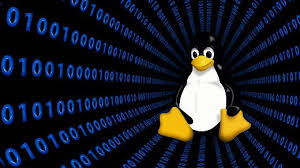Disk and partition management in Linux involves tasks such as creating, deleting, resizing, and formatting partitions on storage devices. Here’s an overview of disk and partition management in Linux:
- Identifying Disks and Partitions:
- Use the
fdisk -lorlsblkcommand to list available disks and their partition information. - Disks are typically represented as
/dev/sdX(e.g.,/dev/sda,/dev/sdb), while partitions are represented as/dev/sdXY(e.g.,/dev/sda1,/dev/sdb2).
- Use the
- Creating Partitions:
- Use a partitioning tool such as
fdiskorpartedto create partitions on a disk. These tools provide interactive interfaces for creating and modifying partitions. - For example, you can use
sudo fdisk /dev/sdXto start thefdisktool for a specific disk, and then follow the prompts to create partitions.
- Use a partitioning tool such as
- Deleting Partitions:
- Similarly, you can use
fdiskorpartedto delete existing partitions on a disk. - Be cautious when deleting partitions, as it permanently removes the partition and its data. Make sure you have a backup if needed.
- Similarly, you can use
- Resizing Partitions:
- To resize a partition, you can use tools like
parted,resize2fs(for ext2/3/4 file systems), orntfsresize(for NTFS file systems). - Resizing partitions may involve resizing the file system within the partition and adjusting the partition boundaries.
- To resize a partition, you can use tools like
- Formatting Partitions:
- Once a partition is created or resized, you need to format it with a file system before you can use it.
- Use commands like
mkfs.ext4,mkfs.xfs, ormkfs.ntfsto format partitions with specific file system types.
- Mounting Partitions:
- After formatting, you can mount the partitions using the mounting procedure mentioned earlier.
- Specify the partition device (e.g.,
/dev/sdXY) and the mount point (e.g.,/mnt/mydisk) to mount the partition.
- Automounting Partitions:
- To have a partition automatically mounted at system startup, you can add an entry to the
/etc/fstabfile, as mentioned earlier.
- To have a partition automatically mounted at system startup, you can add an entry to the
- Disk Management Tools:
- Linux provides various disk management tools such as
fdisk,parted,gparted(a graphical partitioning tool), andlsblkto help with disk and partition management tasks. - These tools offer different levels of functionality and ease of use, so choose the one that suits your requirements.
- Linux provides various disk management tools such as
When performing disk and partition management tasks, it is important to exercise caution and double-check your actions to avoid accidental data loss or damage to the file system. Always make sure to back up critical data before making any changes to disk partitions.
SHARE
